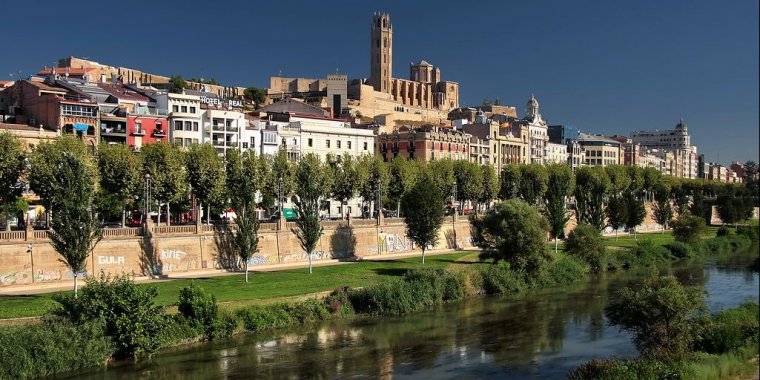| Travel / Tourist Attractions |
Tourist Attractions in Lleida, Spain
Lleida is one of the oldest towns in Catalonia, with recorded settlements dating back to the Bronze Age period.
• La Seu Vella, Apt. de Correus 1013. A cathedral built in a blend of Romanesque and Gothic styles over time, and made a military fortress in the 18th century. There is also an older, and mostly destroyed Palau de la Suda, built during Arab rule and later used as a royal residence by the counts of Barcelona and kings of Aragon. Both medieval buildings are situated over the so-called Turó de la Seu, a medium-sized hill that overlooks the town.
• Seu Nova, the baroque cathedral, in use since Bourbon rule. It was burnt during the Spanish Civil War by the anarchists commanded by Durruti.
• La Paeria, the city council and also a historical site with remains and artefacts from Roman times through to the Moorish rule, Mediaeval and Modern times, including old prison cells.
• Gardeny is a hill hosting a fortress built between the 12th and 13th centuries. Used by the Knights Templar in the Middle Ages after the area (a fifth of the town) had been granted to them by King Ramon Berenguer IV.
• The gardens known as Camps Elisis, already used by the Romans. The Mermaid Fountain is a nice piece.
• Parc de la Mitjana, Carrer Xavier Puig i Andreu. Park in northeastern part of the city.
• Church of Sant Llorenç, a 12th-century Romanesque church with 15th-century Gothic additions. The interior is well preserved.
• The bishop of Lleida’s Palace on Rambla d'Aragó, which also serves as an art museum displaying pieces spanning from Romanesque to Baroque times.
• El Roser, a 13th-century convent built by the Dominican Order. It hosted a fine arts academy of the same name and has recently been controversially reformed and turned into a parador (a luxury hotel using a historical location).
• Lleida Public Library, on Rambla d'Aragó, in the building previously known as La Maternitat, a mid-19th century orphanage.
• Auditori Enric Granados. Lleida's foremost concert hall. Next to its basement and on public display are some ancient ruins.
• Caixa Forum Lleida, 3 Avinguda de Blondel and Avinguda de Madrid, in the building popularly known as Montepío. A museum, cinema and art centre.

The building hosting CaixaForum Lleida. ![]()
• Lleida Museum opened in 2008, and owned by the Diocese of Lleida focusing on the town's history. Some of the artefacts it contains, which come from areas historically belonging to the diocese but not currently part of the province of Lleida's territory and jurisdiction, have been the object of contention with the neighbouring dioceses and the government of the autonomous community of Aragon.
• The Institut d'Estudis Ilerdencs, used to be a hospital (Antic Hospital de Santa Maria) built in Gothic style, but today is a historical museum and research centre open to visitors, with historically significant artworks and artefacts from the Iberian, Roman, Arab, medieval and modern times, as well as an exhibit area usually showcasing contemporary local artists.
• Parc de l'aigua, urban park in the southern neighborhoods. (Wikivoyage, Wikipedia)
See also Lleida in Pictures
YOU MAY ALSO LIKE












